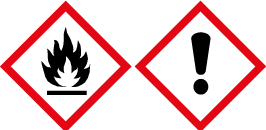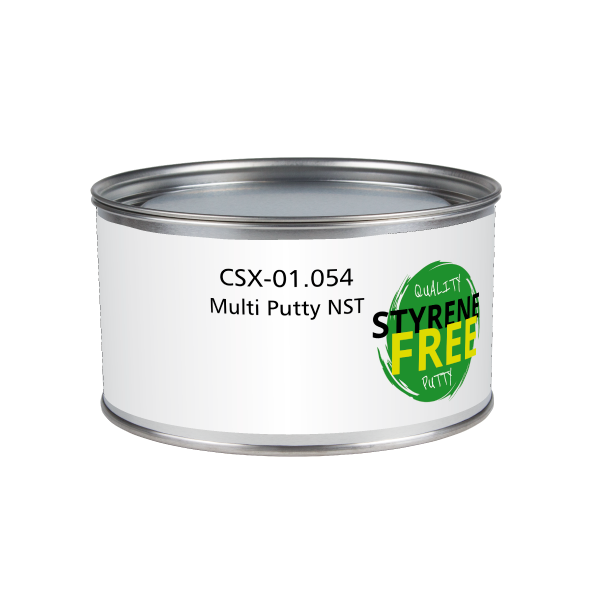Styrene-free putty CSX-01.054
WHAT IS STYRENE?
Styrene is an unsaturated hydrocarbon that looks like a clear colourless liquid with an aromatic, sweet odour. It is widely used as a solvent for unsaturated polyester resins and products made of these resins, including putties.
| STYRENE | VINYL TOLUENE | |
| Flammability | YES | YES |
| Flash point | 31°C | 60°C |
| Carcinogenicity | SUSPECTED | NO |
| Reprotoxicity | YES | NO |
| Ototoxicity | YES | NO |
| Irritating to skin | YES | YES |
| Irritating to eyes | YES | YES |
| Irritating to respiratory tract | YES | NO |
WHY MULTI PUTTY NST (CSX-01.054) IS SUCCESSFULLY USED AS A SIGNIFICANTLY LESS HARMFUL REPLACEMENT FOR STANDARD STYRENE PUTTIES?
By removing styrene from the putty formulation, we significantly decrease health hazards for human organs and thus improve health security for employees in the body shops and areas adapted for refinishing works.

What is more, we maintain the product quality guarantee as for standard styrene putties, in terms of: application, drying time, sanding, adhesion and in-can stability.

THE DIFFERENCES IN THE CLASSIFICATION OF STYRENE AND STYRENE-FREE PUTTY
STYRENE PUTTY
(CSX-01.018)

H226 Flammable liquid and vapour.
H315 Causes skin irritation.
H317 May cause an allergic skin reaction.
H319 Causes serious eye irritation.
H361d Suspected of damaging the unborn child.
H372 Causes damage to the hearing organs through prolonged or repeated exposure.

H226 Flammable liquid and vapour.
H315 Causes skin irritation.
H317 May cause an allergic skin reaction.
H319 Causes serious eye irritation.

